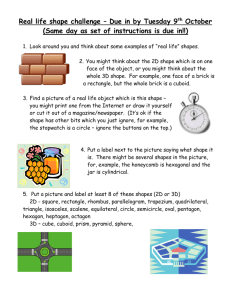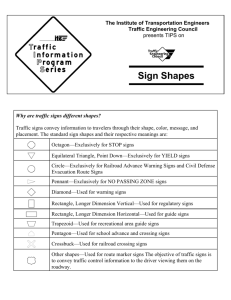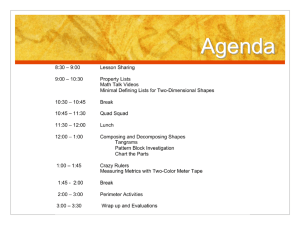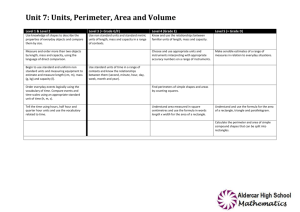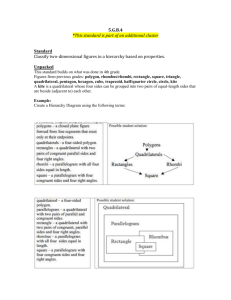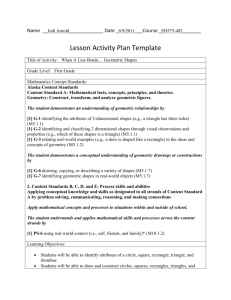van Hiele Levels of Geometric Thinking
advertisement
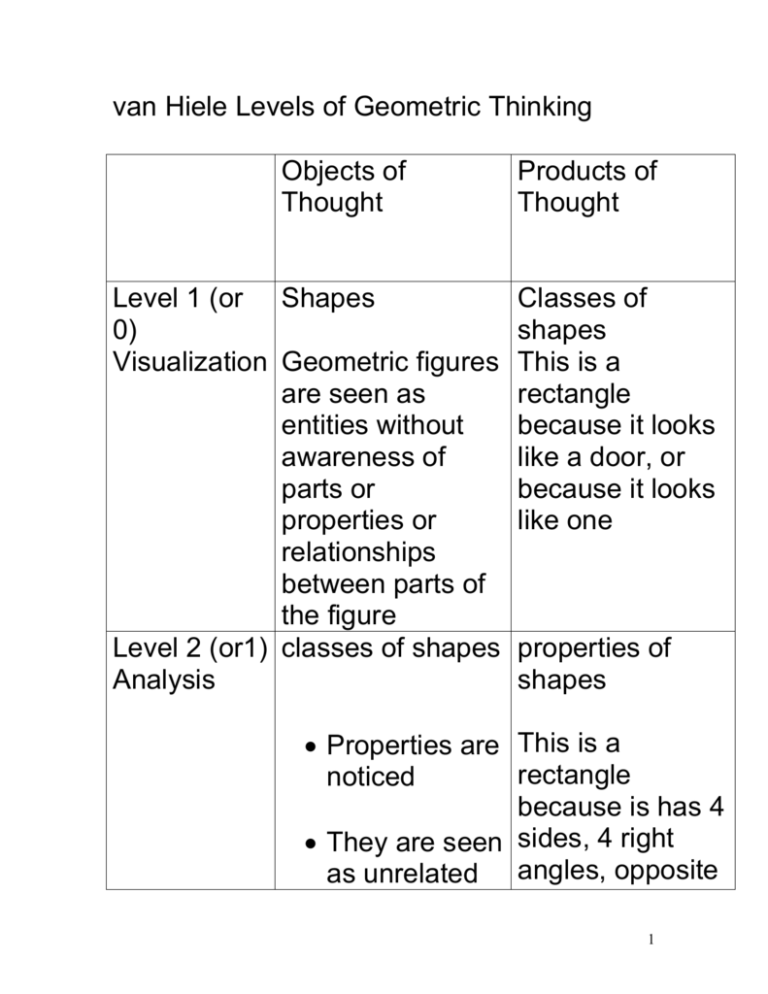
van Hiele Levels of Geometric Thinking Objects of Thought Level 1 (or Shapes 0) Visualization Geometric figures are seen as entities without awareness of parts or properties or relationships between parts of the figure Level 2 (or1) classes of shapes Analysis Products of Thought Classes of shapes This is a rectangle because it looks like a door, or because it looks like one properties of shapes Properties are This is a rectangle noticed because is has 4 They are seen sides, 4 right as unrelated angles, opposite 1 to one another Level 3 (or 2) Informal Deduction Properties of shapes definitions have meaning relationships seen between properties and between figures – can deduce properties from other sides are parallel, it is closed, opposite sides are congruent, diagonals bisect each other, adjacent sides are perpendicular….. Relationships among properties It is a rectangle because it is a parallelogram with right angles (uses minimal number of properties) 2 properties Logical implications are understood so Informal arguments be followed Hierarchical thinking can be used The role of deductive reasoning is not understood 3 Objects of Thought Level 4 (or Relationships 3) among Formal properties Deduction can construct proofs understand role of axioms and definitions meaning of necessary and sufficient conditions can supply reasons for steps in a proof Products of Thought Deductive systems of properties Given that this is a parallelogram and one angle is a right angle, I can prove that it is a rectangle 4 Questions and Activities: It is important that the level of the activities match the level of the student. Initially, students need to engage in guided, structured activities Sorting and classifying shapes How are they alike, how different? Put together and take apart shapes in 2 and 3 dimensions Draw shapes There needs to be explicit discussion of objects being studied and properties. But the language has to match the level. Focus on properties of shapes rather than just identifying that you have a rectangle etc. Determine properties that are true for ALL rectangles – look at ALL/Some types of statements Later, activities should be more open-ended 5 Encourage students to make and test conjectures – will an observation hold all of the time? What properties are necessary and sufficient to guarantee that you have a certain polygon – what properties of diagonals guarantee that you have a rhombus? Finally the teacher helps students develop an overview of the material and try integrate ideas. The formal deduction is most likely not developed until high school Try to have students at level 2 when entering high school geometry 6
